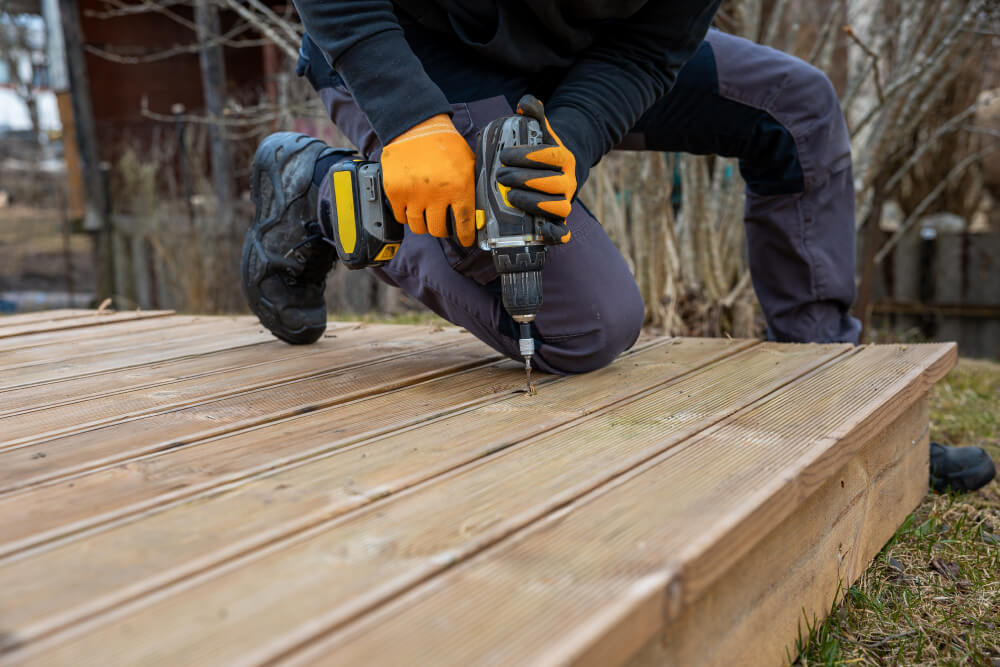Staining your deck and fence is a crucial step in maintaining and enhancing their appearance and durability. Over time, exposure to the elements can cause wood to fade, crack, and deteriorate. A high-quality stain not only revives the look of your deck and fence but also provides essential protection against weather damage, UV rays, and moisture. This comprehensive guide will walk you through the process of staining your deck and fence, offering expert tips for achieving a professional and long-lasting finish.
Benefits of Staining Your Deck and Fence
Before diving into the staining process, let’s explore the benefits of staining your deck and fence:- Enhanced Appearance: Staining restores the natural beauty of the wood, enhancing its color and grain while providing a fresh, polished look.
- Protection Against the Elements: Stain acts as a barrier against moisture, preventing rot, mold, and mildew. It also protects against UV damage, reducing the risk of fading and cracking.
- Increased Longevity: Regular staining extends the life of your deck and fence by preventing damage and maintaining the wood’s integrity.
- Ease of Maintenance: A stained surface is easier to clean and maintain, reducing the buildup of dirt and grime.
- Increased Property Value: A well-maintained deck and fence enhance your home’s curb appeal and can increase its overall value.
Tools and Materials Needed
To stain your deck and fence, you’ll need the following tools and materials:- High-quality wood stain
- Wood cleaner or deck cleaner
- Wood brightener (optional)
- Pressure washer or garden hose
- Stiff brush or deck scrubber
- Sandpaper or power sander
- Paintbrushes, rollers, or a sprayer
- Drop cloths or tarps
- Painter’s tape
- Protective gear (gloves, safety glasses, mask)
Join HICP Homeowner’s Alliance
Connect with experts, get special discounts and enjoy member benefits
Step-by-Step Guide to Staining Your Deck and Fence
Step 1: Prepare the Surface- Clean the Wood: Begin by thoroughly cleaning the wood surface. Use a wood cleaner or deck cleaner to remove dirt, mildew, and old stain. Apply the cleaner according to the manufacturer’s instructions and scrub the surface with a stiff brush or deck scrubber.
- Rinse the Surface: Rinse the cleaner off with a pressure washer or garden hose. Ensure all cleaner residue is removed, as it can affect the stain’s adhesion.
- Brighten the Wood (Optional): For a more vibrant finish, apply a wood brightener after cleaning. This step helps restore the wood’s natural color and open the grain for better stain absorption. Rinse thoroughly after application.
- Allow the Wood to Dry: Let the wood dry completely before staining. This may take 24-48 hours, depending on weather conditions. Moisture in the wood can prevent the stain from adhering properly.
- Inspect the Wood: Check the wood for any rough spots, splinters, or raised grain. Sand these areas to create a smooth surface for staining.
- Sand the Wood: Use sandpaper or a power sander to sand the entire surface lightly. This step helps the stain penetrate the wood more effectively.
- Clean Up Dust: Wipe away any sanding dust with a clean, damp cloth. Dust can interfere with the stain’s adhesion.
- Select a High-Quality Stain: Choose a high-quality wood stain designed for outdoor use. Consider factors such as color, transparency (solid, semi-transparent, or transparent), and the level of UV protection.
- Test the Stain: Test the stain on a small, inconspicuous area of the wood to ensure you’re happy with the color and finish.
- Protect Surrounding Areas: Use drop cloths or tarps to protect plants, furniture, and other surfaces from stain splatters. Apply painter’s tape to adjacent areas to prevent accidental staining.
- Stir the Stain: Stir the stain thoroughly to ensure even color and consistency. Do not shake the can, as this can create bubbles.
- Apply the Stain: Use a paintbrush, roller, or sprayer to apply the stain evenly to the wood surface. Work in small sections to maintain a wet edge and avoid lap marks. Apply the stain in the direction of the wood grain for a smooth finish.
- Back-Brush the Stain: If using a sprayer or roller, back-brush the stain with a paintbrush to ensure even coverage and penetration into the wood.
- Apply a Second Coat (If Needed): Depending on the type of stain and the desired finish, you may need to apply a second coat. Follow the manufacturer’s instructions for drying times between coats.
- Check Drying Times: Allow the stain to dry according to the manufacturer’s instructions. This typically takes 24-48 hours, but drying times may vary based on weather conditions and the type of stain used.
- Avoid Foot Traffic: Keep foot traffic and furniture off the deck until the stain is fully cured to prevent damage to the finish.
Tips for a Professional Finish
- Choose the Right Weather: Stain your deck and fence on a dry, cloudy day with temperatures between 50°F and 80°F. Avoid staining in direct sunlight or during extreme heat or cold.
- Work in Sections: Work in small sections to ensure even coverage and prevent lap marks.
- Maintain a Wet Edge: Keep a wet edge while staining to avoid visible lines and ensure a smooth finish.
- Stir Frequently: Stir the stain frequently during application to maintain consistent color and prevent settling.
- Use Quality Tools: Invest in high-quality brushes, rollers, or sprayers for the best results. Cheap tools can leave streaks and uneven coverage.
Maintenance Tips
- Regular Cleaning: Keep your deck and fence clean by sweeping away debris and washing the surface regularly with a mild detergent.
- Inspect Annually: Inspect your deck and fence annually for signs of wear, such as fading, cracking, or peeling. Address any issues promptly to maintain the wood’s protection.
- Reapply Stain as Needed: Depending on the type of stain and exposure to the elements, you may need to reapply stain every 2-4 years to maintain optimal protection and appearance.
When to Seek Professional Help
- Extensive Damage: If your deck or fence has extensive damage, such as rot, deep cracks, or structural issues, a professional can provide the necessary repairs and ensure a proper finish.
- Complex Designs: For intricate designs or hard-to-reach areas, a professional can ensure even coverage and a high-quality finish.
- Limited Tools or Experience: If you lack the necessary tools or experience, hiring a professional can save time and ensure a flawless result.
By following this comprehensive guide, you can successfully stain your deck and fence, enhancing their appearance and protecting them from the elements. Proper preparation, high-quality materials, and careful application ensure a professional and long-lasting finish. Enjoy the beauty and durability of your newly stained outdoor spaces, and take pride in a job well done. Happy staining!




















